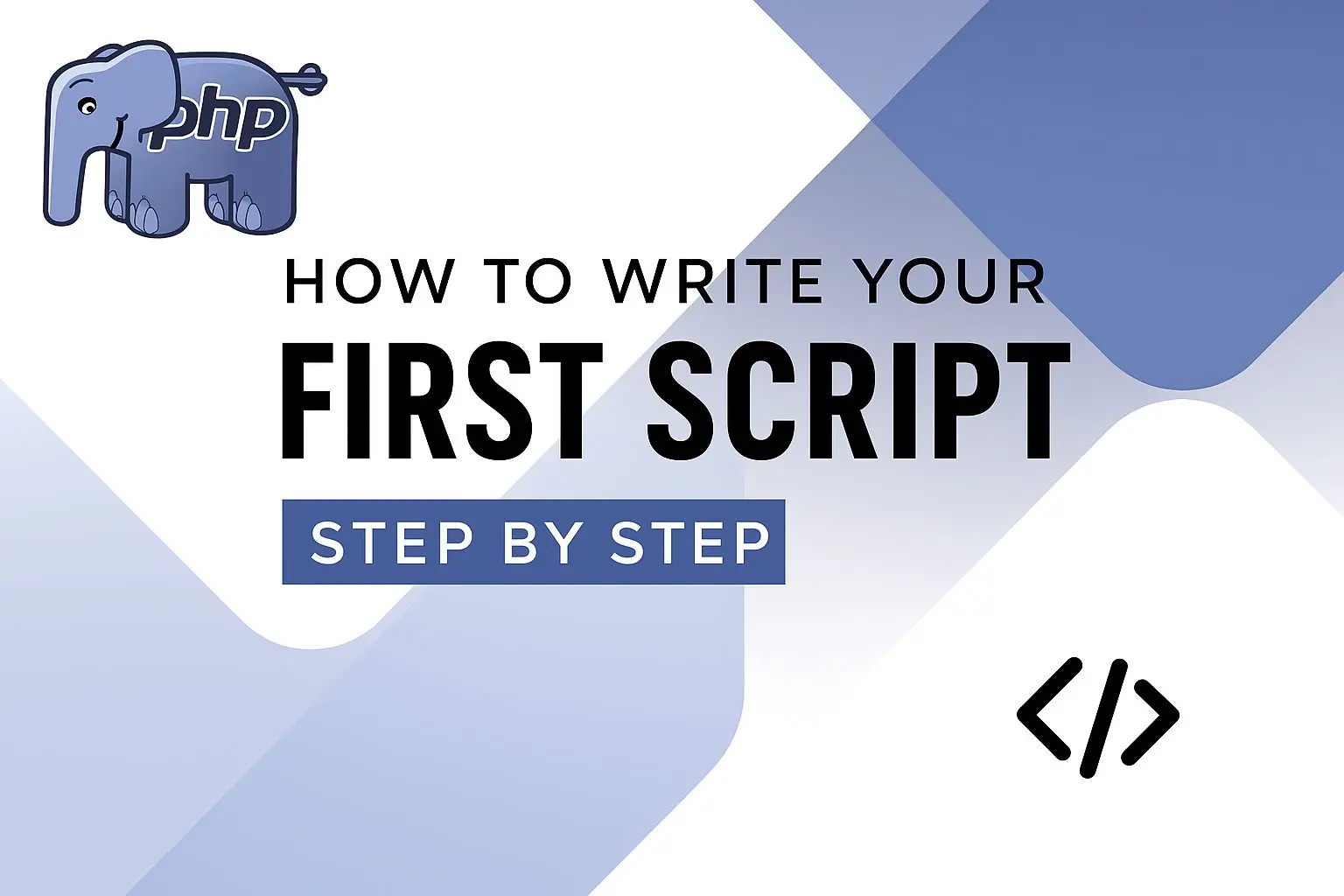Welcome to the world of PHP programming! If you’re new to coding or looking to learn PHP fast, you’re in the right place. PHP (Hypertext Preprocessor) is one of the most popular server-side scripting languages, powering millions of websites worldwide. In this PHP basics guide, we’ll walk you through creating your first PHP script in just 5 minutes—no prior experience required!
By the end of this PHP coding tutorial, you’ll understand how to set up a basic PHP environment, write a simple script, and display output on your browser. Whether you’re aiming to build dynamic websites or just exploring PHP for beginners, this step-by-step article has you covered. Let’s dive in!
Why Learn PHP Basics?
Before we jump into your first PHP script, let’s quickly see why PHP is worth your time. It’s beginner-friendly, widely used (think WordPress, Laravel, and more), and perfect for creating interactive web pages. Mastering PHP basics opens the door to a career in web development or even launching your own projects. Ready to get started with this easy PHP tutorial? Let’s go!
What You’ll Need to Write Your First PHP Script
To create your first PHP script in 5 minutes, you’ll need a few simple tools:
- A Text Editor: Use something like Visual Studio Code, Sublime Text, or even Notepad.
- A Local Server: Install XAMPP, WAMP, or MAMP to run PHP on your computer.
- A Browser: Chrome, Firefox, or any browser to view your output.
Don’t worry if this sounds technical—setting up XAMPP (a popular choice) takes just a few clicks. You can download XAMPP here and follow their simple installation guide. Once installed, you’ll have a local server ready to test your PHP script example.
Step 1: Setting Up Your PHP Environment
Assuming you’ve installed XAMPP, here’s how to get started:
- Launch XAMPP and start the Apache module (this runs your local server).
- Navigate to the XAMPP installation folder (usually
C:\xamppon Windows). - Find the
htdocsfolder—this is where your PHP files will live. - Create a new folder inside
htdocs, likemyphpproject.
That’s it! Your environment is set. Now, let’s write some code.
Step 2: Writing Your First PHP Script
Time to create your first PHP script! Open your text editor and follow these steps:
- Create a new file and name it
index.php. The.phpextension tells the server this file contains PHP code. - Add the following code:
<?php
echo "Hello, World! This is my first PHP script!";Save this file inside your myphpproject folder (e.g., C:\xampp\htdocs\myphpproject\index.php).
Breaking Down the Code
Let’s understand what’s happening in this PHP script example:
<?php: This tag tells the server that PHP code is starting.echo: A PHP command to output text to the browser."Hello, World!": The text you want to display (in quotes).?>: This closes the PHP code block.
It’s that simple! This is the foundation of PHP programming for beginners.
Step 3: Running Your PHP Script
Now, let’s see your script in action:
- Ensure XAMPP’s Apache server is running.
- Open your browser and type:
http://localhost/myphpproject/index.php. - Hit Enter, and you should see: Hello, World! This is my first PHP script!
Congratulations! You’ve just run your first PHP script in 5 minutes. How easy was that?
Step 4: Experimenting with PHP Basics
Let’s take it a step further. Edit your index.php file and try this:
<?php
$name = "Reader";
echo "Hello, " . $name . "! Welcome to PHP!";Save and refresh your browser. You’ll see: Hello, Reader! Welcome to PHP!. Here’s what’s new:
$name: A variable that stores the text “Reader”. Variables in PHP start with a$..: The dot concatenates (joins) strings together.
This is a taste of how PHP for beginners can get interactive. Variables are a core part of coding, and you’ve just used one!
Common Mistakes in Your First PHP Script
As you learn PHP fast, watch out for these beginner pitfalls:
- Missing Semicolon: Every PHP statement (like
echo) needs a;at the end. - File Extension: Save as
.php, not.html, or the server won’t process it. - Server Not Running: Double-check Apache is active in XAMPP.
Fixing these ensures your PHP coding tutorial runs smoothly.
Where to Go Next with PHP?
You’ve nailed your first PHP script—what’s next? Here are some ideas to keep learning:
- Variables and Data Types: Experiment with numbers, strings, and arrays.
- Forms: Create a simple form to collect user input.
- Databases: Connect PHP to MySQL for dynamic websites.
PHP’s versatility makes it a must-know skill. Keep practicing, and soon you’ll be building full web applications!
Conclusion: Your PHP Journey Starts Here
In just 5 minutes, you’ve gone from zero to writing your first PHP script. This easy PHP tutorial introduced you to the essentials: setting up a server, writing code, and displaying output. Whether you’re here to learn PHP fast or explore PHP basics, you now have a solid starting point.
Excited to code more? Try tweaking your script—change the text, add variables, or explore PHP’s vast features. The only limit is your imagination. Happy coding, and welcome to the PHP for beginners community!
Have questions or want more PHP script examples? Drop a comment below!


